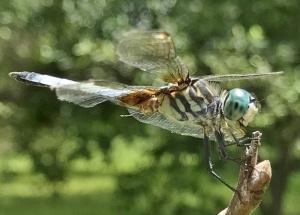By the end of August, my plants were looking heat stressed, scraggly and just plain exhausted.
It was so tempting to pull them all up by the roots and make the garden look all neat and tidy.
If you’re not from the Midwest, you may not understand that biological-garden-clock sort of thinking.
In other than Deep South Texas parts of the country, the end of summer signifies the end of the garden. Time to pull up stuff that’s dying and replace it with fall-colored chrysanthemums. A sad time of year. I’m truly glad I live in the Rio Grande Valley.
An errant stand of cow pen daisy, Verbesina encelioides, was the worst culprit. Not only was it scraggly, it was big and scraggly, covering half the ramp that leads to our lower acreage. It was useless even for seed collection, the pods having long given up their wares to marauding insects.
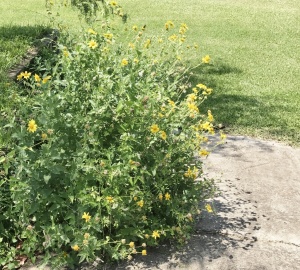
Fortunately early September brought two glorious inches of rain to our part of San Benito; the plant world perked up and reminded me that I live in the realm of eternal summer and don’t need to perform a drastic outdoor cleaning frenzy.
Every time I’d think about ripping out ailing plants, my Good Imp would remind me we’re entering fall butterfly season and the butterflies will be looking for nectar. The Imp overrode that strong desire to clean up the pitiful plants. I’m glad I held out. I have been amply rewarded.
The cow pen daisy plants miraculously sprang to life producing flowers for nectar, and forming fresh seed pods for later collection. A climbing milkweed, Funastrum cynanchoides, sprang into bloom twining through the plant and adding a lovely contrasting palette.
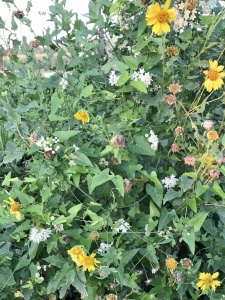
The fresh blooms didn’t go unnoticed!
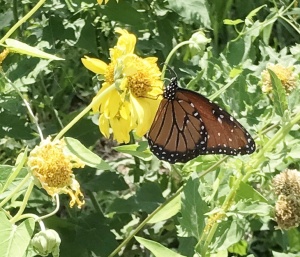
The rains were welcome but the accompanying wind event was from an unusual direction and left some interesting debris, like the palm frond with what could possibly be an oriole nest woven into the fronds.
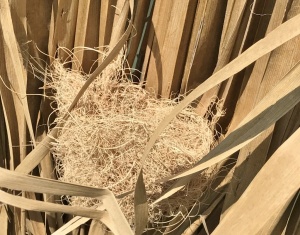
A healthy stand of Jann Miller’s Indian mallow, Abutilon hulseanum, blew over and partially uprooted. I left it at the new angle and poured fresh soil on top of the exposed roots.
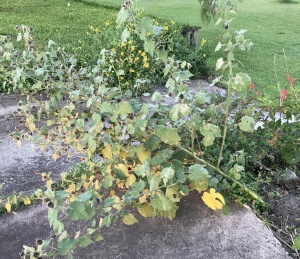
The leaves are suffering a bit, perhaps from shock, but it’s still blooming and producing great seed pods.
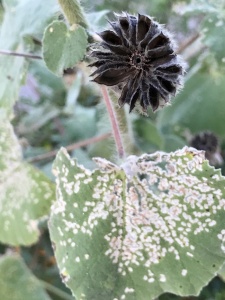
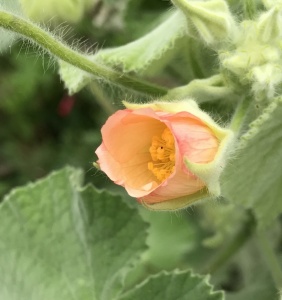
On a note of normalcy, droves of dragonflies of all colors are back, showing off their aerial acrobatics as I make my rounds of the property.
Orange, green, yellow, black, red and blue dragonflies zip around with a flexibility like no other insect.
Did you know that dragonflies can move each of their four wings independently to flap up and down and rotate forward and backward allowing dragonflies to fly up, down, backwards, sideways, hover like a helicopter and make hairpin turns in the blinking of an eye?
I did not know that until I began researching to see what they eat.
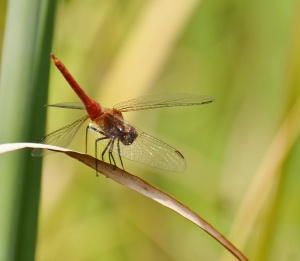
Dragonflies eat on the fly. Their unique flight capabilities and remarkable vision help them detect the movement of other insects.
They eat mosquitoes, flies, gnats, even butterflies, moths and smaller dragonflies. A single dragonfly can eat hundreds of mosquitoes a day. They catch their insect prey by grabbing it with their feet.
Even with such remarkable sight and flight capabilities, they are not without enemies. Birds and frogs eat dragonflies, and spider webs can imprison a dragonfly for a spider’s next meal.
I must admit, I’ve freed more than a few dragonflies from the clutches of spider webs. The other day, I even saw a dragonfly carrying a small, light brown moth. I had my phone in hand with the photo app open, but that’s one picture that flew off with the dragonfly. As did many others while trying to capture a picture of them with a phone camera. Fortunately, dragonflies rest a lot and for long periods of time.
